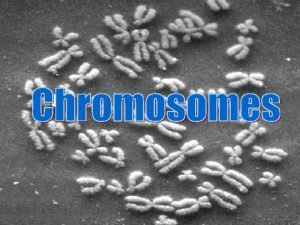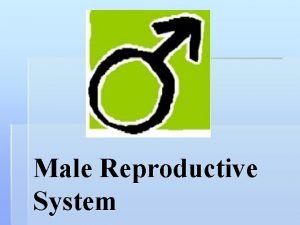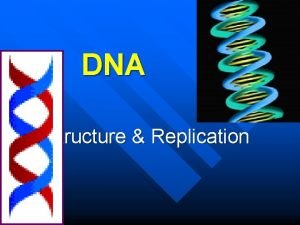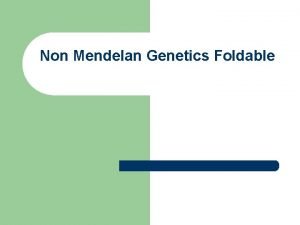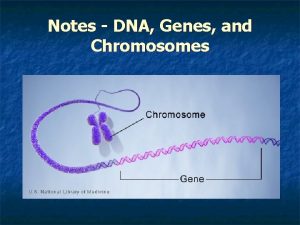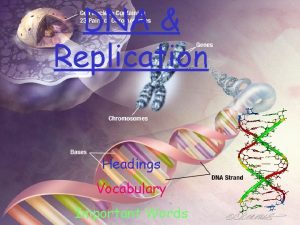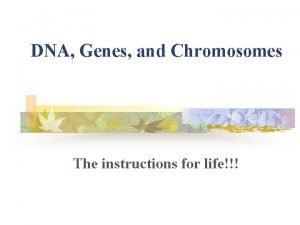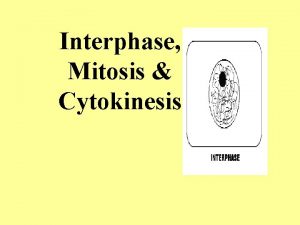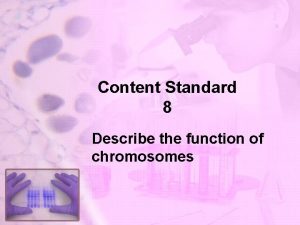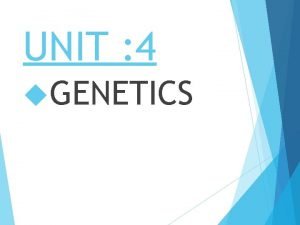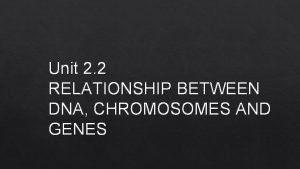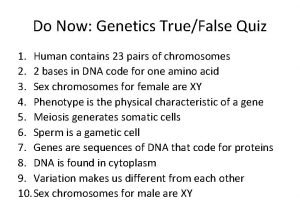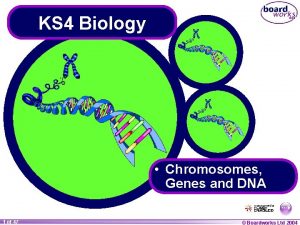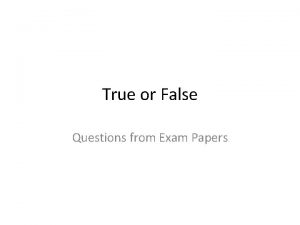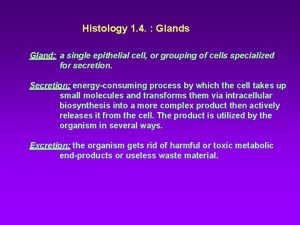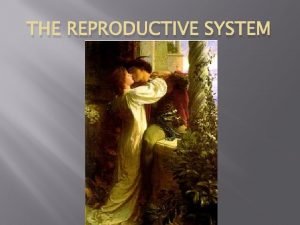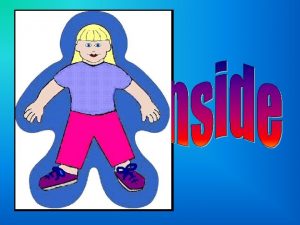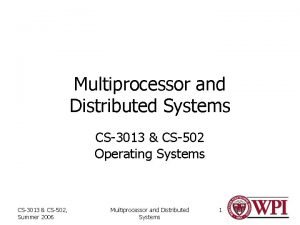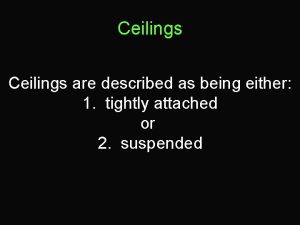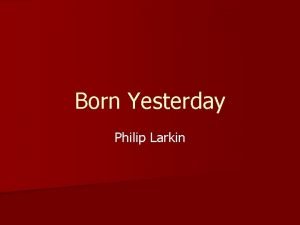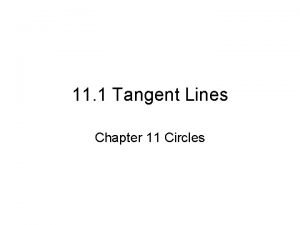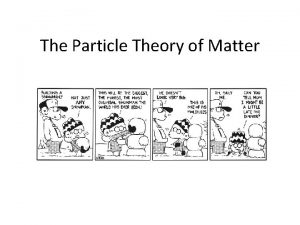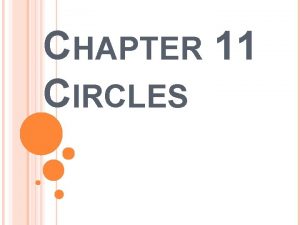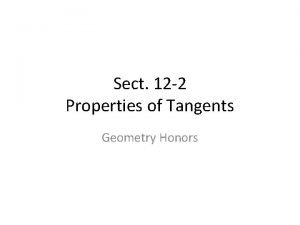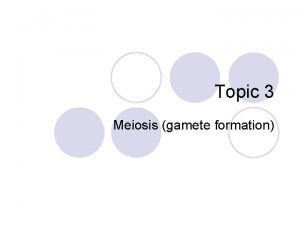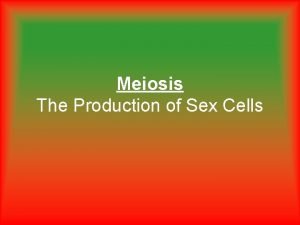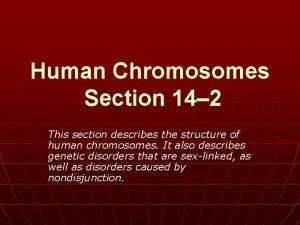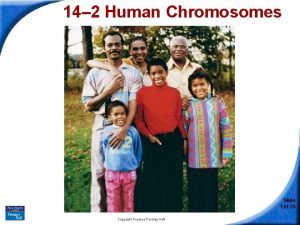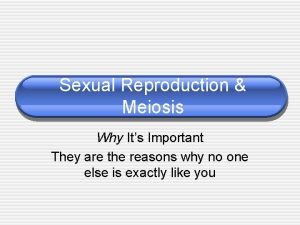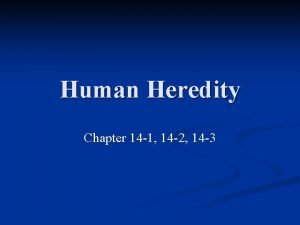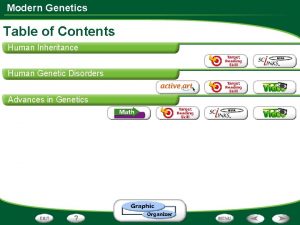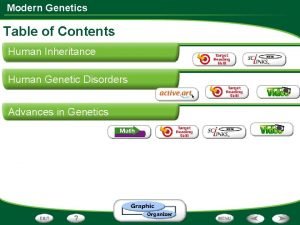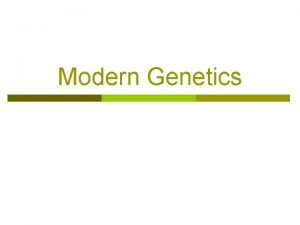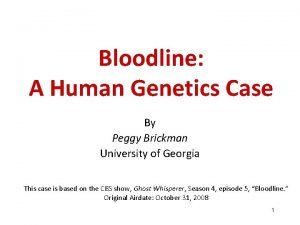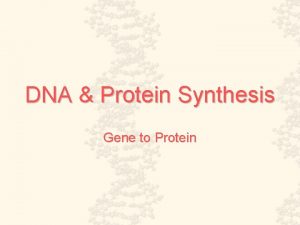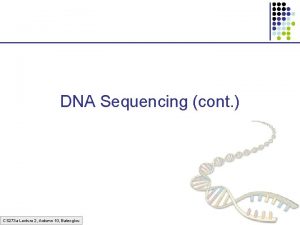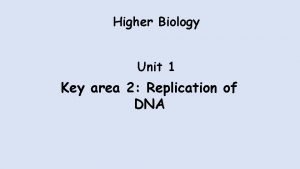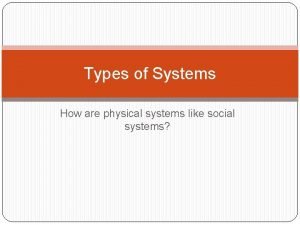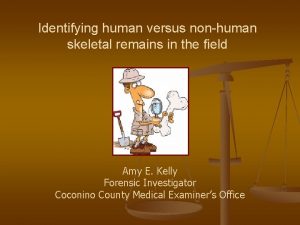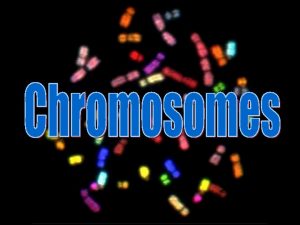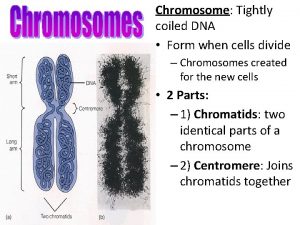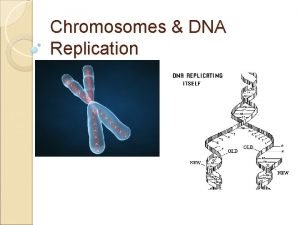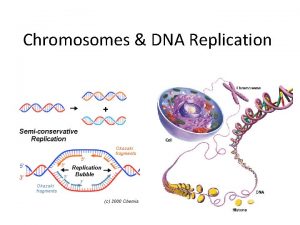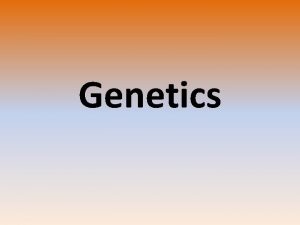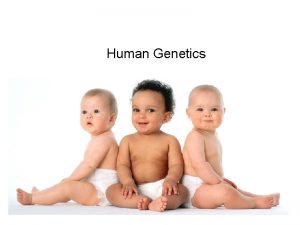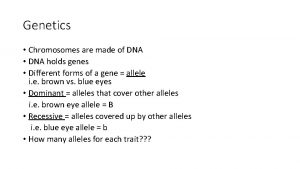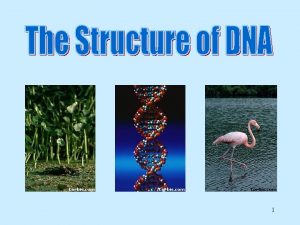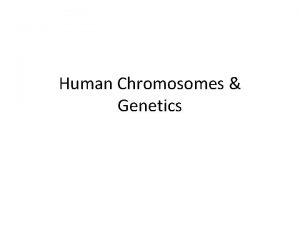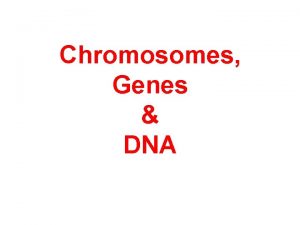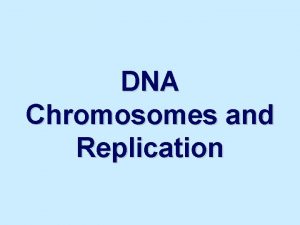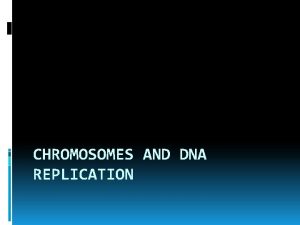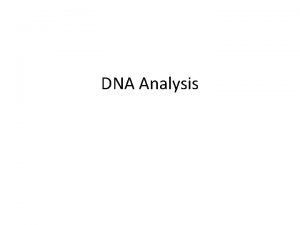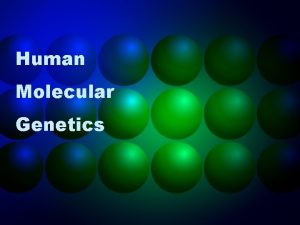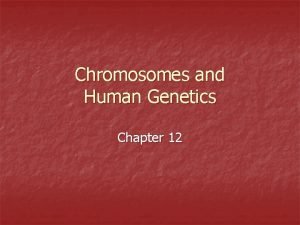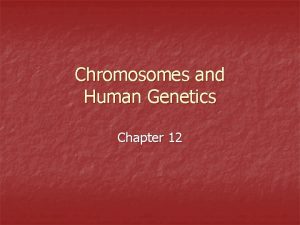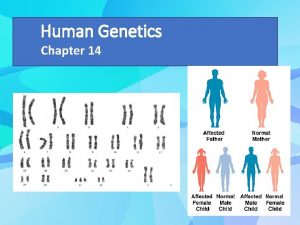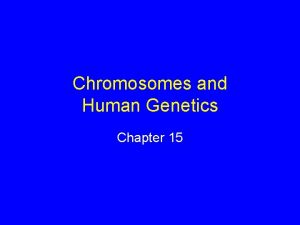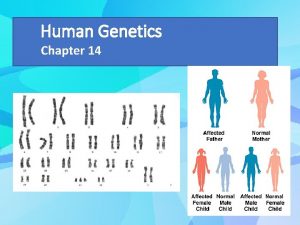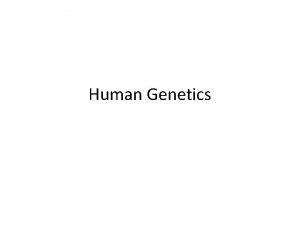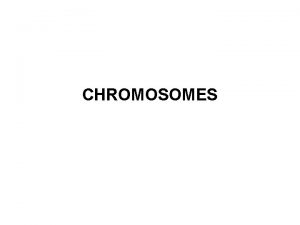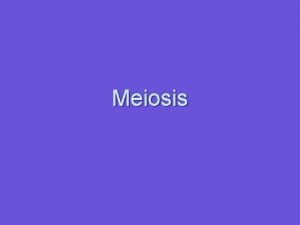Human Genetics Chromosomes Made of tightly coiled DNA


























































- Slides: 58

Human Genetics

Chromosomes – Made of tightly coiled DNA around histone proteins. Humans have 46 total, counted in 23 pairs. There are 2 types of chromosomes: • Autosomes: (# 1 -22) are all the other chromosome pairs except the sex chromosomes. • Sex Chromosomes: (# 23: either XX = female, or XY = male), they determine a person’s sex (gender).

Karyotype: picture of chromosomes arranged in pairs. Grouping chromosomes by size and type. Autosomes are 1 -22, and 23 is the sex chromosomes. Nucleus DNA

Human Karyotype autosomal chromosomes sex chromosomes

� We can use a Punnett square to predict the possible sex of offspring, there is always a 50/50 ratio in humans.

Sex chromosomes Mom X X X Y Dad Offspring: Female Male

Relative size of human sex chromosomes Why do you think Xchromosomes are so much larger than Ychromosome? ? ?

Karyotype Worksheet Compete both sides of your worksheet on Karyotypes and turn in when finished. ○ You may work with a partner. 15 minutes

Karyotype Activity � Read the Introduction � Answer questions 1 -5 Read the directions on the next page � Tear out Figure 2 page! � � Draw Figure 3 on the back of the packet Start by cutting out chromosome 1, glue it down in the chromosome 1 spot and find its match. Glue matching chromosomes next to each other. Continue this process until all 23 pairs have been glued in the correct place. � Answer Analysis questions 1 -5 � � (skip “going further”) � Turn in when finished!

Warm-up � Karyotype homework check!

Agenda � Lecture/Notes on Pedigree Charts �Pedigree Worksheet � Lecture/Notes on Blood Types �Blood Type Worksheet

Pedigree Chart • Shows how a single natural trait is transmitted from one generation to the next within a family. • Many traits are strongly influenced by environmental, or non-genetic factors: like nutrition and exercise; these would not be used in a pedigree chart.

male Show Trait AA female Carries Trait Aa No Trait aa

P generation married

F 1 generation children

married

F 2 generation

Ff ff ff ff Ff Ff Trait: Freckles autosomal dominant Ff ff


Pedigree Worksheet � Complete all the pedigree problems in your worksheet packet. � You may work with a partner. ○ 10 minutes.

Human blood types The Human Genome – is our complete set of genetic info, includes thousands of genes. Some of the very first genes to be identified were those that controlled blood type: the ABO blood group. The ABO blood group – has multiple alleles: IA, IB, and i. • Alleles IA and IB are codominant.

In blood types, both A and B are dominant, and O is recessive. • We use the letter “I” to represent dominance in blood types, there are 3 possible alleles: A = IA, B = IB, and O = i. • There are 4 possible phenotypes, both A and B blood types can be homozygous or heterozygous.

Blood Type Punnett Squares � Cross a man who is Homozygous for type B blood with a woman who has type AB blood. � Cross a woman who has type AB blood with a man who is heterozygous for type A blood.

Find the offspring blood type � What are the blood types of the parents if the children have the following blood types: IAIB IAi IBi ii

Blood Groups Phenotype (Blood Type Genotype Antigen on Red Blood Cell Safe Transfusions To Use this chart to complete your worksheet questions on blood types. • 10 minutes to complete From

Warm-up � Check homework �Pedigree WS �Blood Types WS

My Family Pedigree! � Choose a single trait in your family: � Ex: height, eye color, hair color, L/R handed, etc. � Step 1: Write down all your family members and their phenotype for the trait you chose. � Ex: Mom- short, Dad-tall, Sister-short, Uncle- short, Aunt-tall. � Your chart must have: P, F 1, and F 2 (you/siblings). � Step 2: Create a family pedigree chart! � Determine the proper shading for each person depending on how their traits were inherited.

Agenda � Notes on Human Disorders � Hand out Genetics Unit Review Packet

Genetic Disorders � Recessive Alleles: some genetic disorders are inherited when two defective recessive alleles are passed to the offspring, one from each parent. � Ex 1: PKU (phenylketonuria) occurs when 2 recessive alleles are inherited on chromosome 12. Causes an inability to digest the amino acid phenylalanine, because their body does not produce the necessary enzyme to break it down. When phenylalanine is not digested it builds up in the tissues of the body and can cause mental disorders in infants. Thankfully, there is a test for newborns and special milk formulas for PKU babies so they can live normal lives.

Ex 2: Tay-Sachs Disease: caused by an autosomal recessive allele, found most commonly in those of European ancestry. Causes a progressive break down of the nervous system and sometimes death in infants. Ex 3: Cystic Fibrosis is a fatal disease that originated in Europe, and is caused by a recessive allele on chromosome 7. Produces a protein that has a deletion of 3 base pairs (codon) so the protein made is not able to function properly, causing those with Cystic Fibrosis to produce thick mucus that clogs their airways and makes it very difficult to breathe.

The Cause of Cystic Fibrosis The most common allele that causes cystic fibrosis is missing 3 DNA bases. As a result, the amino acid phenylalanine is missing from the CFTR protein. Normal CFTR is a chloride ion channel in cell membranes. Abnormal CFTR cannot be transported to the cell membrane. The cells in the person’s airways are unable to transport chloride ions. As a result, the airways become clogged with a thick mucus.

Dominant Allele Disorders: are expressed when only one copy of the gene is present (heterozygous). �Ex 1: Dwarfism (achondroplasia) is autosomal dominant. �Ex 2: Huntington’s Disease causes progressive muscle loss, and loss of mental function until death occurs. Symptoms begin to show in someone’s thirties/forties.

� Codominant Disorders: When one allele of a gene is good and one allele is bad. � Ex: Sickle Cell Anemia occurs in 1 out of every 500 African Americans, and causes them to have both normal and sickle (bent) shaped blood cells. The sickle cells cannot carry oxygen like normal blood cells can, and cause damage or even blockages of blood vessels and tissues. Sickle Cell Anemia causes physical weakness and can sometimes be fatal. ○ People with Sickle Cell Anemia are resistant to the deadly disease Malaria, the sickle cells actually help to destroy the malaria parasite.

Autosomal Disorders caused by Recessive alleles Dominant alleles include Cystic fibrosis include Galactosemia Albinism Phenylketonuria Tay-Sachs disease Achondroplasia Codominant alleles Huntington’s disease Sickle cell disease Hypercholesterolemia

Sex-Linked Disorders Most sex linked disorders, or traits, are carried on the X chromosome. Ex. 1: Colorblindness: the inability to distinguish between certain colors, caused by an X-linked recessive allele. Color blindness is rare in females because they have 2 X-chromosomes for gender; males have just 1 X-chromosome: this means all X-linked alleles on the Xchromosome for sex are more likely to be inherited in males (even if they are recessive). • In order for a recessive allele to be expressed in females, there must be 2 copies of the allele, one on both of her two X-chromosomes. Women are more likely to be a carrier of sex linked disorders.

Example Cross a woman who is a carrier with a color blind man. Key C = see color c = color blind Cross XCXc with XCY Genotypes possible: XCXc, XCY, Xc. Xc, Xc. Y Phenotypes: • Normal female • Normal male • Color blind female • Color blind male



� Ex. 2: Hemophilia: disorder that prevents blood from clotting properly, caused by an X-linked allele. The gene for producing the proper protein necessary for normal blood clotting is missing due to a deletion mutation. �Ex: Queen Victoria

� Ex. 3: Muscular Dystrophy: progressive weakening and loss of skeletal muscle, caused by a defective version of the gene that codes for muscle protein on the X-chromosome.

X-linked Practice � Work with your shoulder partner to solve the X-linked Punnett sqares!

Ex. 4: X-inactivation - one X chromosome is switched off. In females, some cells have one X turned on and the other turned off, the one that is off creates dark spots in the nucleus called Barr Bodies. This can also create two differently expressed genes on either X-chromosome. In males, they only have 1 X-chromosome, so if its off/inactivated, then the genes it coded for would not be expressed. Barr body

X-inactivation – Ex: IN CATS one X = orange spots, another X = black spots In some cells one X is switched off. In other cells the other X is switched off. As a result, the fur will be a mixture of colors. (males can only have one color of spots WHY? ) Calico colored cat

Non-Disjunction is the failure of one or more homologous chromosomes (pairs) to separate during meiosis. It can involve autosomal or sex Chromosomes. Abnormal numbers of chromosomes can end up in the gametes, and a disorder of Chromosome numbers may result. Homologous chromosomes fail to separate Meiosis I: Nondisjunction Meiosis II

1. Autosomal Chromosome Disorders Down Syndrome - Trisomy on chromosome 21 (3 copies of this chromosome). Results in mild to severe mental illness, increased susceptibility to disease, and birth defects. Sex Chromosome Disorders 2. Klinefelters Syndrome- Men have an extra X chromosome (XXY) – are sterile. 3. Turner Syndrome- women inherit only one X chromosome (X) - women are sterile.

Think-Pair-Share! � How are recessive disorders inherited? � Are autosomal disorders dominant or recessive? � Which chromosome are sex-linked disorders carried on?

Genetics Unit Review Packet � Test on the 19 th (B) and 20 th (A)

Disorders Project � Make a 1 page (8”x 11”) poster in Microsoft Word �Like a PSA (*think: public service announcement) � Individually choose any disorder from the list! �Your poster must contain the following: ○ Name of the genetic disorder ○ 3 Pictures/visuals ○ What genes/chromosomes are affected � What is the persons genotype ○ What phenotype does the person have � Is their physical appearance affected ○ How is the disorder inherited ○ Are their carriers or lethal forms of the disorder ○ How is the disorder treated DUE on Test Day!


Human DNA Analysis � Testing for Alleles- prospective parents can find out if they might be carrying alleles for a genetic disorder, as defective alleles have slightly different DNA sequences from their normal counterparts. A variety of genetic tests have been developed that can spot those differences. � DNA Fingerprinting – to identify an individual, analysis of sections of DNA that have little or no known function but vary widely from one individual to another. It does not analyze the cells most important genes, which are identical among most people.

Human Genome Project – All human DNA has now been fully sequenced (we know all the base pairs and their locations on each chromosome). Done in 2 ways: � Rapid Sequencing – scientists first determined the sequence of bases (ACGT) in separate regions of DNA. These regions are then used as markers which make if possible to locate and then return to specific locations in the genome. � Shotgun Sequencing – involved cutting DNA into random fragments, then determining the sequence of bases in each fragment. Computers put the fragments together by linking the overlapping areas like putting together a puzzle.


Gene Therapy � Process of changing the gene that causes a genetic disorder. In gene therapy an absent or faulty gene is replaced by a normal, working, gene so that the body can make the correct protein/enzyme/hormone it needs (which eliminates the cause of the disorder).

Summary � Please spend the next two minutes writing a summary about DNA analysis and gene therapy.

Disorders Project � Research a genetic disorder and make an informative PSA poster (public service announcement) � Use Microsoft Word to make a colorful 8”x 11” poster! � Name of the disorder � Genotype ○ what gene’s are affected � Phenotype ○ what would a person look like � Symptoms of the disorder � How is it inherited ○ (dominant/recessive, from mom/dad) � Are their carriers or is it lethal? � How is the disorder treated? � Can the disorder be avoided? DUE on test day!

Next class: �Review Unit 6 Material

Review Day 1. Finish your VOCABULARY! � Definitions & Pictures 2. Answer FLASH CARDS questions! � At least 10 3. Work on the REVIEW PACKET! � DUE on test day = next class

Unit 7 Genetics Test Word Bank B � 3 �I � Tetrad �O � Father �P � Heterozygous � Half � Pedigree � Probability � Alleles � Genes � Prophase I � Karyotype � Gene � Homologous Chromosomes
 How to write chromosome notation
How to write chromosome notation Semen
Semen Coiled dna
Coiled dna Genetics foldable
Genetics foldable Genes chromosomes and dna
Genes chromosomes and dna Building vocabulary: the nucleus, dna, and chromosomes
Building vocabulary: the nucleus, dna, and chromosomes Dna, genes and chromosomes relationship
Dna, genes and chromosomes relationship Interphase to cytokinesis
Interphase to cytokinesis Function of chromosome
Function of chromosome Genes chromosomes dna
Genes chromosomes dna What is the relationship between dna chromosomes and genes
What is the relationship between dna chromosomes and genes Dna chromosomes genes diagram
Dna chromosomes genes diagram Chapter 12 section 1 dna the genetic material
Chapter 12 section 1 dna the genetic material What are chromosomes made of
What are chromosomes made of Chromosomes are made up of
Chromosomes are made up of Coiled gland
Coiled gland Coiling basketry drawing
Coiling basketry drawing Space regainer appliance
Space regainer appliance Tissie
Tissie Have you ever looked in the mirror
Have you ever looked in the mirror Tightly coupled multiprocessor
Tightly coupled multiprocessor All resources are tightly coupled in computing paradigm of
All resources are tightly coupled in computing paradigm of Tightly attached ceiling
Tightly attached ceiling Tightly folded bud
Tightly folded bud Practice 11-1 tangent lines
Practice 11-1 tangent lines Tightly packed in a disorderly manner
Tightly packed in a disorderly manner Tightly attached ceiling
Tightly attached ceiling Unit 10 homework 6 tangent lines
Unit 10 homework 6 tangent lines Explain system models for distributed and cloud computing
Explain system models for distributed and cloud computing A belt fits tightly around two pulleys
A belt fits tightly around two pulleys Chromosomes human
Chromosomes human How many chromosomes in human
How many chromosomes in human 14-2 human chromosomes
14-2 human chromosomes Section 14-2 human chromosomes
Section 14-2 human chromosomes 14-2 human chromosomes
14-2 human chromosomes How many chromosomes are in a human’s sex cells?
How many chromosomes are in a human’s sex cells? 14-2 human chromosomes
14-2 human chromosomes Dna polymerase function in dna replication
Dna polymerase function in dna replication Bioflix activity dna replication dna replication diagram
Bioflix activity dna replication dna replication diagram Coding dna and non coding dna
Coding dna and non coding dna Replication process
Replication process Dna rna protein synthesis homework #2 dna replication
Dna rna protein synthesis homework #2 dna replication Human inheritance modern genetics answer key
Human inheritance modern genetics answer key Human clone
Human clone Modern genetics human inheritance answer key
Modern genetics human inheritance answer key Section 14-3 human molecular genetics
Section 14-3 human molecular genetics Human genetics concepts and applications 10th edition
Human genetics concepts and applications 10th edition Peggy brickman
Peggy brickman The spools from which the dna unwinds is made of what
The spools from which the dna unwinds is made of what Human dna sequence example
Human dna sequence example Replication of dna higher biology
Replication of dna higher biology What is a ubiquitous resources
What is a ubiquitous resources Human made
Human made Human made social systems
Human made social systems Human vs non human bones
Human vs non human bones Cna chapter 8 human needs and human development
Cna chapter 8 human needs and human development Chapter 8 human needs and human development
Chapter 8 human needs and human development Gni definition ap human geography
Gni definition ap human geography Non human nouns
Non human nouns
